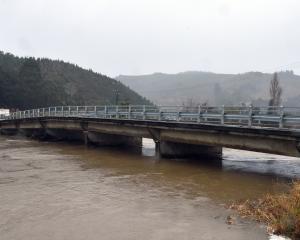The council, along with Environment Canterbury and Waikato Regional Council, is calling for the Ministry of Business, Innovation and Employment to reconsider its proposed regulations for dam safety.
The Otago Regional Council has been pushing for a large dam to be defined by its height ''or'' its volume, rather than both height ''and'' volume thresholds.
Otago Regional Council environmental engineering and natural hazards director Gavin Palmer said despite previously advising support for changing ''and'' to ''or'' in the definition of a large dam on the grounds of safety risks, the department had approved a supplementary order paper recommending leaving the definition unchanged.
''We strongly believe in a risk-based approach to dam safety and to minimise compliance costs.''
The paper is to be tabled during the third reading of the Building Amendment Bill No 4 and the finalised regulations are to take effect on July 1 next year.
Dr Palmer, who wrote a submission paper on behalf of the three councils, did not believe the changes achieved the end purpose of ensuring high-risk dams were managed.
The changes created a separation between building controls for dams and obligations under dam safety regulations, and over-complicated regulations.
If dams had to meet safety obligations, why would they not have to meet construction standards, he said.
''That is the irrational aspect. It should be both or neither.''
Experience had shown it was difficult to retrospectively make a dam code-compliant, so it made sense to make sure it was compliant from the start, he said.
There were also concerns around the populated 1km ''designated area'' around a dam which would trigger safety standards.
The council believed there were effects well beyond 1km in many cases.
An example was a snow-making dam on the side of a mountain which did not have a population within 1km, but a breach would effect the downstream population and environment beyond that.
It would not be until the legislation came into force the true extent of dams in New Zealand would be known.
Chairman Stephen Woodhead said at a meeting this month there appeared to be an element of the irrigation industry pushing back the other way.
Irrigation New Zealand chief executive Andrew Currie said some of the thresholds being called for by the likes of the ORC were ''over the top''.
There were many dams in Canterbury and some in Otago which were on flat land and controlled by an intake fed by an irrigation scheme that would be captured by those rules.
Other dams were in the middle of nowhere and, if they failed, would only flood landowners' own land.
That translated into extra costs for landowners for no reason.
No-one had appeared to have done a cost-benefit analysis on the proposals, he said.












